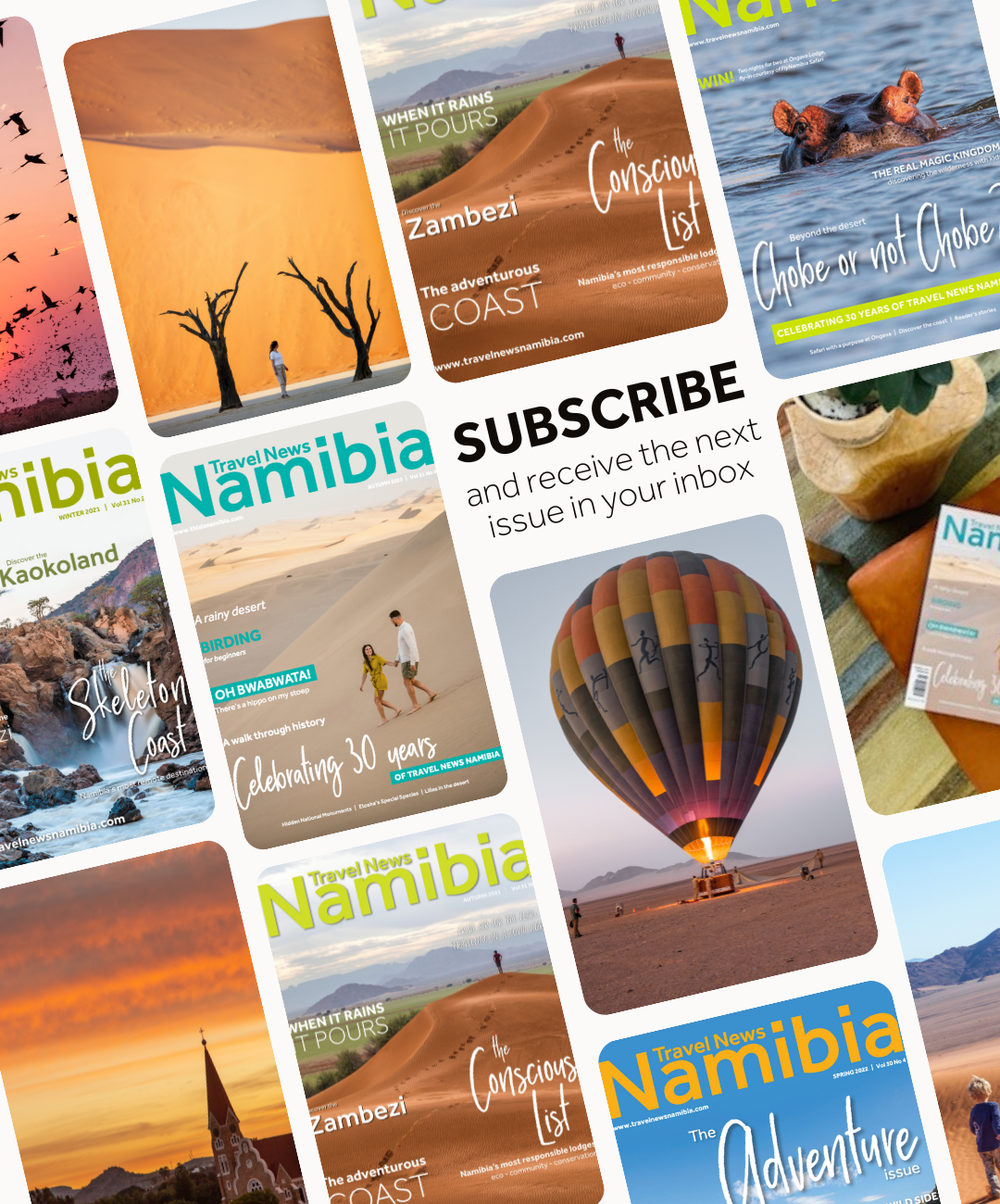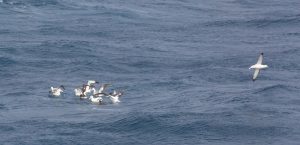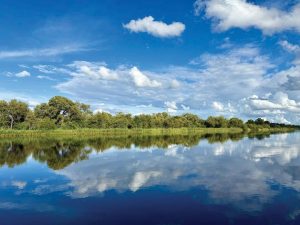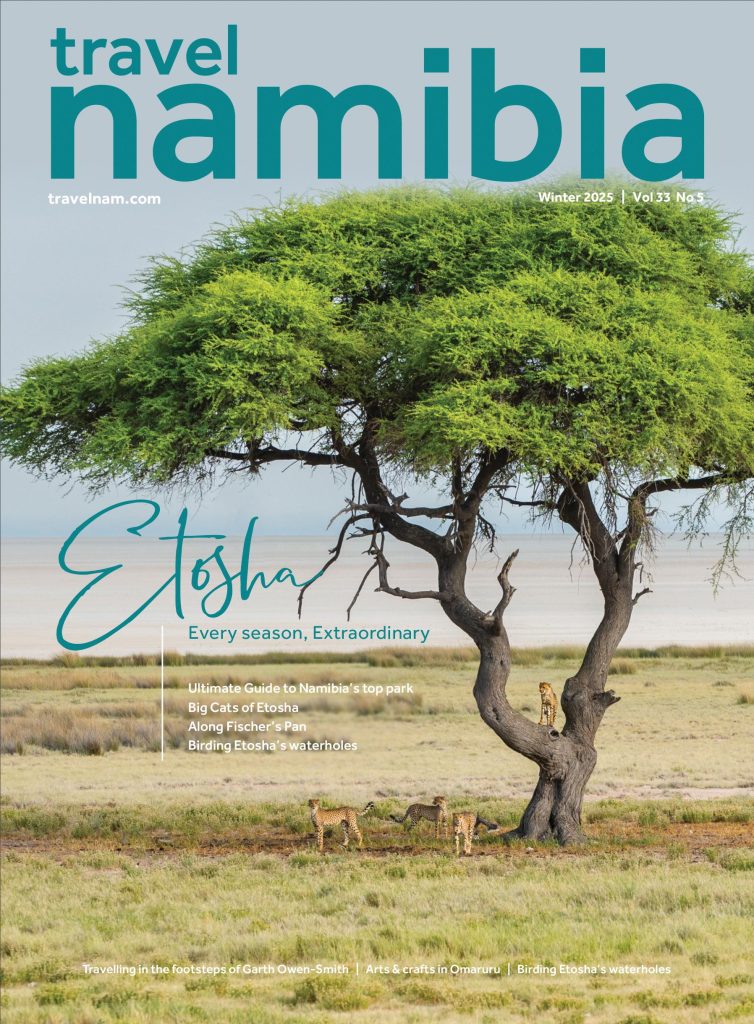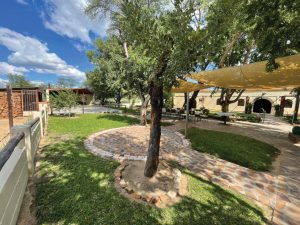
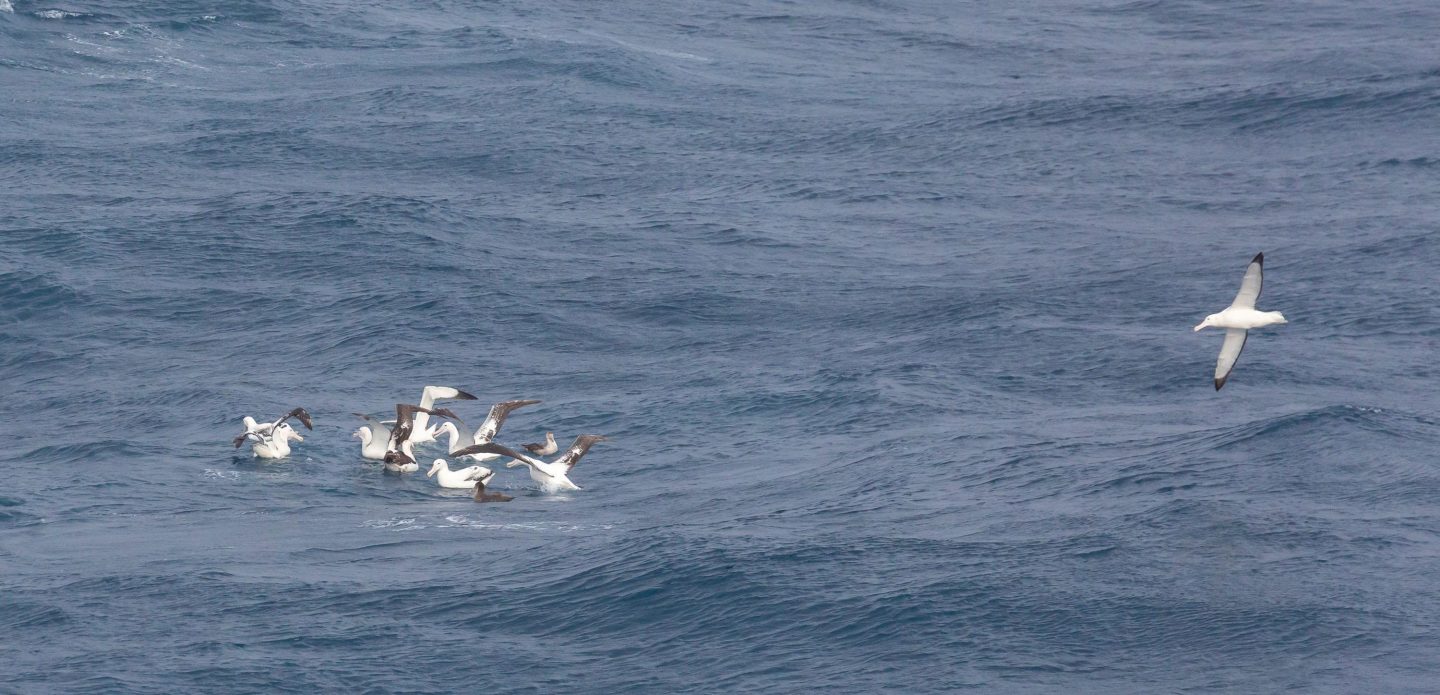
Saving our Seabirds
An expedition to Marion Island with BirdLife South Africa
In mid-December last year, an unexpected question from my sister led me to embark on an extraordinary journey, one that blended the thrill of exploration with a vital cause. I have always considered myself a landlubber, happiest wandering in bushveld, savannah and fynbos. Yet on 25 January this year, I boarded the cruise ship MSC Musica in Durban, South Africa with my sister and her husband, along with almost 2000 birders, conservationists and photographers. Together, we sailed towards an extraordinary destination, captured in two enigmatic words: Marion Island, a place that caught my imagination forty years ago.
But this was no ordinary cruise; it was a call to action.
Text Annabelle Venter | Photographs Annabelle Venter
From the Winter 2025 issue
Marion Island is the larger of two sub- Antarctic islands that make up the Prince Edward Islands and lies roughly 2,200 kilometres southwest of South Africa, halfway to Antarctica. Reaching 1,240 metres above sea level and covering three hundred square kilometres, it is also an active volcano, last erupting in the 1980s. In 1995 it was declared a special nature reserve – enjoying the highest form of conservation protection under South African rule – and remains the only such reserve in South Africa. It counts among the Ramsar Wetlands of International Importance and was also declared an Important Bird and Biodiversity Area. The primary goal of this seven-day journey was to raise critical funds for what the experts regard as the world’s most important conservation project for birds: the eradication of common house mice on Marion Island.
This, the second Flock to Marion expedition, was organised by BirdLife South Africa, a dedicated and highly effective conservation organisation, based in Johannesburg.
Leaving Durban Harbour on a steamy summer’s evening at 17:00, we were out of sight of land within minutes, surrounded by the open ocean. During the night, as we gazed down at the wake against the side of the ship, framed by inky blue- black seas under a dense, cloudy sky, our vessel cut across the busy shipping lanes, the only one heading south towards Antarctica. Normally, this route is only undertaken by the SA Agulhas II, a polar research vessel and icebreaker, but we were fortunate to be on a much larger and more comfortable ship, hosted by MSC Cruises. Due to its isolated position and restricted access, Marion Island is a destination few are fortunate enough to visit, a sanctuary of untamed beauty and extraordinary wildlife studied by the scientific community. But there is trouble in paradise.
THE MOUSE PROBLEM
The common house mouse was accidentally brought to Marion Island over 200 years ago when humans arrived to harvest seal oil. First recorded by a sealer in 1818, the mice now number more than a million and have eaten 90% of the invertebrates on the island, undermining the ecological processes and altering the environment. As a result, the mice turned to the next food source and are now eating the albatross chicks alive. More recently, they have started to target adult birds, along with many other bird species, and now threaten their survival. The albatrosses have not yet evolved to view mice as a threat or to fight back, since they find their food at sea and never on land. They simply sit on the nest, get eaten, become weaker and eventually die a tragic death.
Five house cats were introduced in 1949 to eradicate the mice, but someone forgot to sterilise the cats! By the 1970s, cat numbers had escalated to more than 2,000, and they were killing seabirds for food because they were an easier target, at the rate of 450,000 birds each year. Fifteen years of concerted effort by researchers living on the island eventually eradicated the cats.
The effect on the wildlife has been devastating. Seabirds such as the endangered Wandering Albatross, the longest-lived and furthest-flying bird species on the planet, are at risk of local extinction. A quarter of the global population of these majestic birds breed here in summer, and together with those on Prince Edward Island, number half the world’s population. The mice, therefore, need to be completely eradicated in a once-off operation.
THE MOUSE-FREE MARION PROJECT
This special-purpose project is a non-profit company set up in partnership between BirdLife South Africa and the South African Department of Forestry, Fisheries and Environment. Together with researchers, universities and other organisations, knowledge and expertise are exchanged freely to facilitate the best possible outcome for the project.
Execution of the plan requires meticulous planning. Helicopters and highly skilled pilots will be transported to the island by ship and stationed there until the right conditions arise. Winter offers the only viable six-to-eight-month period when the mice are hungry and the albatrosses and other seabirds are out at sea, minimising the risks to non- target species. This window of opportunity needs to be utilised effectively before the seabirds return to breed in early summer.
Rodenticide will be spread across 30,000 hectares during two similar operations, ten to fourteen days apart, using spreader buckets and advanced mapping technology to ensure total coverage. Precision and over-engineering are key to success, backed by years of scientific research following the eradication of rodents on over 700 islands worldwide.
With US$30 million required, this project is a massive undertaking, but it offers a once-in-a-lifetime opportunity to reverse the damage and safeguard the island’s seabirds for generations to come.
The purpose of our expedition was to raise much-needed funds for the Mouse-Free Marion Project and BirdLife South Africa, who manage the project. Participants were invited to sponsor land at R1,000 per hectare to contribute to the enormous financial effort required for the project. In addition to sponsoring a hectare (or more), on the final night of the cruise, a live auction featuring artworks, books, sponsored vacations and other contributions brought the total raised to an astounding R9 million, a testament to the collective determination of those on board.
EDUCATING OURSELVES TO BECOME AMBASSADORS FOR THIS CAUSE
The on-board lecture programme kicked off within two hours of leaving Durban, with the project manager of Mouse-Free Marion, Dr Anton Wolfaardt, detailing the reasons for the trip. Conservationists, photographers, birding experts and other professionals involved in the project shared insights about Marion Island, its ecological importance and the conservation goals of the expedition. Fascinating presentations, three to four times a day for the first two days at sea, allowed everyone to learn more about the destination and its unique challenges.
Undoubtedly, the highlight for many was the presence and lectures by the project’s first patron, the much-loved and respected seabird expert and guide, Peter Harrison MBE. Now 78 years young, this remarkable gentleman left a stable job in the UK at age 27 to travel the world to compile the first definitive guide to seabirds. An accomplished painter, he illustrated his book as he went, and has continued to travel the world, including more than 200 trips to the Antarctic. He still works hard at guiding birding expeditions and raising awareness worldwide alongside his wife, Shirley Metz (who was the first woman to ski overland to the South Pole). The updated version of his book required a further 16 years, an extra artist and a text editor to complete and has recently been published. Adventure is in their DNA, and their achievements are nothing short of remarkable.
Marion Island’s importance cannot be overstated, emphasising the necessity of preserving its unique ecosystem. We were informed before the trip that the ship was not permitted to venture closer to the islands than 12 nautical miles (22 kilometres). We understood the reason for this being to prevent further contamination. In addition, South Africa does not want to set a precedent for other cruise ships that might not have the insight as to why they won’t be allowed on the island.
TWO DAYS AROUND THE ISLANDS
Monday the 27th of January, the third day of the trip, turned out to be an unforgettable one. As the decidedly chilly dawn broke around 03:30, a quiet and excited anticipation filled the air. We lined the decks of the massive cruise ship, scanning the endless expanse for seabirds. I caught sight of Prince Edward Island, rising from a peachy-coloured mist-covered sea, mystical and fleeting, exactly as I had imagined. The sheer scale of the ocean was overwhelming, and from my cabin on the 11th deck, grasping the size and distance of the birds below felt impossible. It is a wild, windy and wet location set in the Roaring Forties, but we were blessed with lots of sunny weather during the first day. As we approached Marion Island, snow was visible on its highest peaks and valleys. We learned later that just 24 years ago, an iceberg was photographed offshore, a sight not seen again due to climate warming. We spent the day drifting slowly around the islands, heading further away for the night to avoid attracting birds to the ship’s lights, before circling the islands once more the following day, then departing back to South Africa.
Giant Wandering Albatrosses soared overhead and alongside the ship, circling the boat with effortless grace. Masses of seabirds swooped and glided in the ship’s turquoise, foamy wake. What struck me most was the silence; unlike the raucous calls of seagulls, these birds moved like ghosts, barely making a sound.
A personal highlight was identifying seven species of albatross. The Sooty Albatrosses, flying past in twin formation like fighter jets while eyeing us on deck, were breathtaking. But it was the Light- mantled Albatross that captivated me most, not because it is Peter Harrison’s favourite bird, but because I knew that just 350 pairs breed on the island. Seeing one among the estimated 700 individuals in this vast sky felt like an extraordinary stroke of luck. Prions filled the quiet hours when albatrosses were elsewhere, and the dainty Black- bellied Storm Petrel trailed its tiny foot across the surface of giant swells to agitate prey. Now and then, a raft of seabirds gathered on the surface as albatross, skuas, and Southern Giant Petrels descended onto the water to fish for food.
Spotting penguins from even the lowest deck was more difficult, but the bird expert spotters helped immensely! King, Macaroni, Gentoo and Eastern Rockhopper Penguins were seen by many, a truly thrilling sighting. We stood frozen and transfixed by the spectacle (glühwein in hand for some), while seabirds swirled around us and spray splashed onto the seventh deck. Often the sea was still and mesmerising, the colour of liquid sapphire. At other times, steely grey and savage with huge breaking waves. This glimpse into another world, so far removed from our own yet so affected by our actions, was humbling, breathtaking, unforgettable and an extraordinary privilege.
WHAT ABOUT PRINCE EDWARD ISLAND?
The little brother of Marion Island has mostly escaped infiltration of invasive species by limiting human access to a small research party once every five years. Many of the researchers stationed on Marion are taunted by the sight of this little island always on the horizon, knowing most will never get the chance to see it. But for those that do, a pristine wilderness awaits. Just 4,500 hectares in size and 670 metres above sea level, it is also a volcano, but less active and probably older than Marion. It boasts the highest density of breeding albatross in the world, particularly Grey-headed and Indian Yellow-nosed Albatrosses. These two species favour the cliffs for nesting, while breeding areas lower down are popular with the Light-mantled Albatross, Wandering Albatross, Northern Giant Petrels, Burrowing Petrels, Sandwich and Fairy Prions to name just a few. On the shorelines, King, Gentoo, Macaroni, and Eastern Rockhopper Penguins abound, as well as sea mammals such as Southern elephant, Antarctic and Subantarctic seals.
SPREADING THE MESSAGE
Joining this expedition has made us all ambassadors for the Mouse-Free Marion Project. What struck me most was, firstly, the enthusiasm of the young participants, their awe and deep understanding of the crisis they will inherit. The second was the passion of all who gave lectures and the emotion they revealed during their presentations. It is the dream of many researchers to work there, and they have an acute personal understanding of the tragedy unfolding around them. When Peter Harrison was asked why all the presenters became so emotional during their talks, he too paused, eyes full of emotion, and shared that it is a spiritual place that has changed his life.
I have heard many participants comment that the trip was life-changing and have been pondering my own response. For the first time, I grasped the vastness and vulnerability of the Southern Ocean, and indeed the planet, in a way that I suspect no journey on land can truly convey. Here, there was simply nobody at all, except of course the ship and its passengers. During two and a half days of steady travelling before reaching Marion Island, a blip in the ocean halfway to Antarctica, we crossed paths with only one container ship in all that time: a gut-wrenching reminder of our consumerism and the resulting waste. On several occasions, I saw plastic drifting past, stark evidence that even here, human impact lingers. Watching seabirds live freely in such an untamed world was breathtaking, yet knowing that an invasive species introduced by humans centuries ago is now threatening their survival is devastating. What damage are we causing today that won’t be understood for another 200 years?
WHY WE SHOULD CARE:
- 19 of the 29 bird species on Marion Island will become locally extinct if invasive mice are not eradicated.
- There are broader implications for global conservation efforts (e.g. protecting albatrosses from deadly fishing lines) that will help to save our seabirds, keeping the ecosystem and biodiversity intact, and ultimately save our oceans and us.
- The success of this mission can inspire similar initiatives worldwide and add to the global knowledge on invasive species eradication. A similar project was attempted unsuccessfully on Gough Island a few years ago, and the hope is that with the knowledge gained, this operation will succeed.
As Dr Anton Wolfaardt says: “It’s a once-off operation, with a potentially permanent result and is crucial for the conservation of the island’s birds. We have a unique chance to turn back the clock.” TN
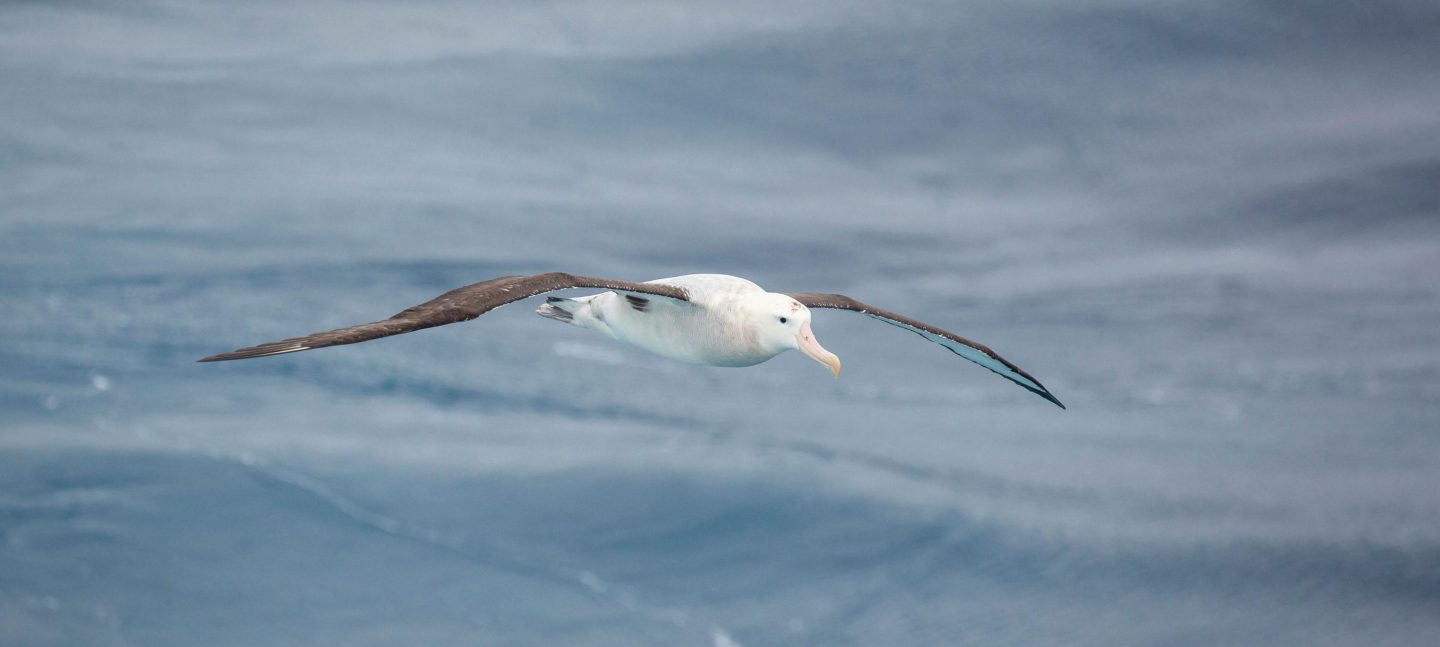
THE ALBATROSS: A BIRD LIKE NO OTHER
“4 genera and 22 species! Did you remember?” is how Peter Harrison began his lectures! According to him they “outlive and outfly everything else”.
Wandering Albatrosses (previously called Snowy Albatrosses) can fly up to 13.5 million kilometres in their lifetime – that’s 35 times to the moon and back. The wingspan of the Wandering Albatross measures up to 3.5 metres across and they glide at sea for 8 months at a time, only landing on the water to fish and eat. In flight, hey hardly flap their wings at all, using the updrafts from the ocean to stay aloft.
The adult pair mates for life, and they lay a single egg every second year. The incubation period is around 76-84 days, then the chick is fed on the nest for about 270 days. The adults take turns in 8-14 day shifts out at sea, fishing for food to bring back to the hatchling. One day, the adults decide they’ve done their best and simply leave the chick, never to return and the juvenile is forced to take its first flight. Thereafter, the fledgling spends 8-10 years at sea before returning to Marion Island to find a mate and begin the cycle again. The oldest known and observed albatross is called Wisdom (a Laysan Albatross) and hatched her latest chick in February this year, at 74 years of age!
Marion Island hosts more than 25% of the world’s Wandering Albatrosses during the summer breeding season. Together with Prince Edward Island they make up 50% of the breeding sites for all Wandering Albatrosses. Because of this, the current plight of the Wandering Albatross and the assault on the hapless chicks are of grave concern. To make matters worse, a deadly strain of avian flu was confirmed on the island a couple of months ago, further putting this already vulnerable island’s birds under severe stress.
Status: Endangered

